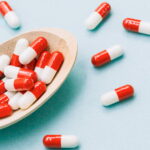In this article, we have tried to analyze different methodologies through which health issues such as erectile dysfunction can be treated and cured. We have discussed the clinical trials involved in this and the root causes and symptoms of the disease. We have also discussed the ongoing research that may come up with revolutionizing cures for health issues such as erectile dysfunction.
The foundation of all medical advancements in clinical research involves clinical trials. Clinical trials examine novel approaches to avert, diagnose, or cure illness. Researchers also use clinical trials to examine various facets of treatment, such as enhancing the quality of life for those with chronic diseases. Clinical trial execution, however, requires a meticulous strategy that incorporates scientific, analytical, ethical, and legal concerns. Therefore, to preserve a relationship with both patients and industry in search of the safest, most effective, and most efficient remedies, healthcare professionals must comprehend the principles on which well-conducted clinical trials hinge.
Background of Clinical Practice
For more than 275 years, clinical trials have provided doctors with the means to discover effective cures for various diseases. There have been struggles but also victories along the road. The industry is where it is now because of the clinical studies conducted decades or even centuries ago. Clinical trials are a type of test used in medicine, medical research, and drug development to determine the safety and effectiveness of health interventions by gathering data on adverse medication reactions and side effects of other therapies (e.g., drugs, diagnostics, devices, therapy protocols).Prior guidelines: The medicine must be devoid of any additional unintentional characteristics. It must be used for a single disease, not a group of diseases. The medicine must be tested on two dissimilar illness types, as sometimes a treatment can treat one disease by its primary properties while treating another by chance. The drug’s quality must match the strength of the sickness. The timing of action must be noted to distinguish between effect and accident. Finally, the drug’s impact must be observed.
Phases of Clinical Research
Pre-clinical research includes analyses of medication manufacture and purity and animal trials. In addition, the medicine’s safety at dosages that roughly correspond to human exposures is investigated in animal trials, together with its pharmacodynamics (i.e., mechanisms of action) and pharmacokinetics (i.e., drug levels and clinical response) components (i.e., drug absorption, distribution, metabolism, excretion, and potential drug-drug interactions). If the medicine is to be further investigated in human subjects, this information must be submitted for IND approval.
Clinical Practice in Sexual Dysfunction
A complicated bio-psycho-social process, sexual functioning is regulated by the endocrine, vascular, and neurological systems. In addition to biological elements, psychosocial factors such as societal and religious beliefs, health status, personal experience, ethnicity, and sociodemographic situations, as well as the psychological status of the individual or couple, are crucial for a person to have healthy sexual functioning. Sexual activity also involves interpersonal interactions, with each partner bringing their attitudes, needs, and reactions to the partnership. Sexual dysfunction may result from a breakdown in any of these areas.
Sexual dysfunction is common in the general population. According to estimates, 31% of men and 43% of women experience some form of sexual dysfunction. The most prevalent male sexual disorder is early ejaculation.
Erectile Dysfunction
Erectile dysfunction (ED), premature ejaculation, delayed or absent ejaculation, lack of libido, hypogonadism, and Peyronie’s disease are all covered under the general term “male sexual dysfunction”. However, the great bulk of evidence derived from the literature has grown since the introduction of pharmaceutical treatments for ED in the middle of the 1990s, which completely changed how male sexual dysfunction is managed. When you cannot get or maintain an erection that is hard enough to allow for satisfying sexual activity, you are said to have erectile dysfunction (ED). ED can be a temporary or permanent issue. The major symptoms of this dysfunction:
- You can occasionally have an erection, but not every time you want sex.
- Can occasionally get an erection, but it does not stay long enough to have satisfying or gratifying sex.
Are never able to acquire an erection
- Principle of Erection: Cause and Symptoms
During sexual stimulation, nerves release chemicals that enhance blood flow to the penis. Two soft muscular penis chambers (the corpus cavernosum) receive blood in flow. The corpus cavernosum’s chambers are solid. During an erection, the elastic tissues become loose and entrap blood. The penis becomes rigid as a result of the pressure generated by blood.During an orgasm, the second set of nerve impulses that reach the penis causes the contraction of tissues, which releases the entrapped blood back to the body, which in turn causes the erection to reverse.Men with erectile dysfunction have trouble getting and keeping an erection for sexual enjoyment. Male impotence, or ED, is another name for it. Heart disease, diabetes, a pharmaceutical side effect, or a potassium deficit are a few potential underlying conditions that might contribute to erectile dysfunction. It can also be brought on by several neurogenic conditions, including Parkinson’s disease and spine traumas. In certain instances, the cause is psychological since the male is self-conscious. In addition to disease, age is a deciding factor.Because there are many possible reasons for ED, a doctor will frequently order blood tests and ask many questions. These examinations can look for various conditions, including diabetes, low testosterone, and cardiac issues. Additionally, the doctor will perform a physical examination that includes a genital exam. Finally, a doctor will conduct additional research after establishing a medical history. If the cause is physical rather than psychological, a test is known as the “postage stamp test” can help. Most nights, men experience 3 to 5 erections. By observing whether postage stamps placed around the penis before bed have fallen off throughout the night, this test looks for the occurrence of erections at night. The Poten test and Snap-Gauge test are two further tests for nocturnal erection. - Treatment of Erectile dysfunction ED is frequently treated by medical specialists, including urologists and primary care doctors. Despite being quite prevalent, ED is not a typical aspect of aging. If you have any ED symptoms, see a medical practitioner. ED could be a symptom of a more serious medical condition. Non-invasive treatments are often tried first. Most of the best-known treatments for ED work well and are safe.
Men should be encouraged to make the required adjustments for their sexual function and general health, as is true for many medical disorders, since lifestyle changes, considered first-line therapy, can positively impact ED management. However, despite the advantages of behavior change, men who come with ED desire the doctor’s assistance with solutions that can make a difference immediately.
Men with mild erectile dysfunction (score of 22–25 on the erectile function domain of the International Index of Erectile Function) do not typically seek treatment. Healthcare professionals frequently disregard their complaints of mild ED as unimportant and do not properly assess such patients. There does not seem to be any published epidemiological data on the prevalence or risk for such diseases in populations of men with moderate ED, even though
ED relates to an increased prevalence of age-related disorders, including diabetes and cardiovascular disease. A deeper comprehension of this population’s inherent risk for ED-related disorders may emphasize the value of early detection and treatment.
- Future of Clinical Research in ED Differentiating between psychogenic and biological erectile dysfunction is a crucial component of erectile dysfunction assessment. Therefore, psychogenic or mixed erectile dysfunction patients should also receive non-pharmacological and pharmaceutical treatments.
Melanocortin activators:
These are medications that seem to work by the nervous system (for example, the brain). Animal studies have demonstrated that they can cause an erection. Intranasal medication administration (PT-141) to males with mild to moderate ED and non-medical (psychological/emotional) as opposed to physical reasons of ED may be beneficial, according to preliminary human research. However, larger studies will be required to prove these medications’ safety and efficacy.
Gene therapy:
In this cutting-edge treatment, genes that generate goods or proteins that may not be operating correctly in the penile tissue of men with ED are delivered. The function of the erectile organ may be enhanced by replacing these proteins. Gene therapy has been shown to improve erectile function in experimental animal models. Studies on humans may also show that this treatment is effective. However, it can take a while for the public and regulatory agencies to approve gene therapy.
Conclusion
Inflammatory arthritis patients frequently experience sexual dysfunction, raising morbidity risk. Therefore, we advise HCPs to include a sexual health assessment and the application of methods to improve sexual health as a crucial component of their management in long-term care.


